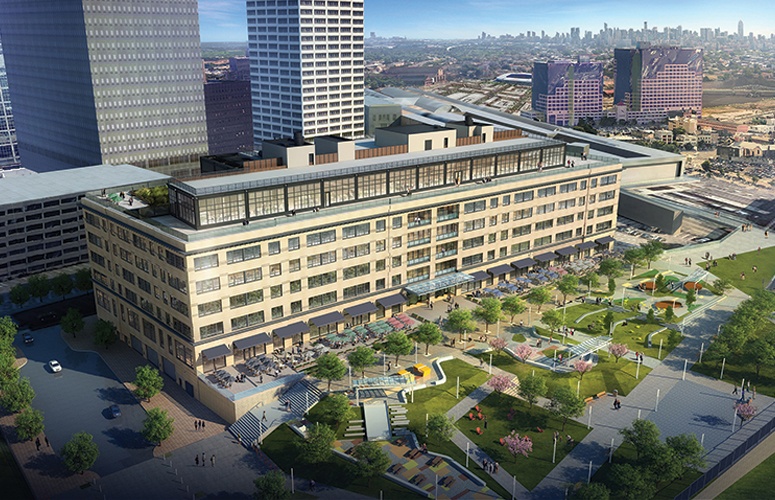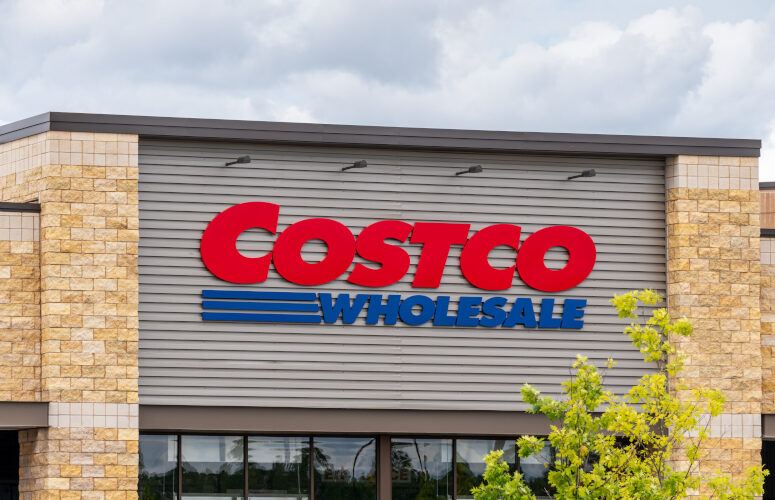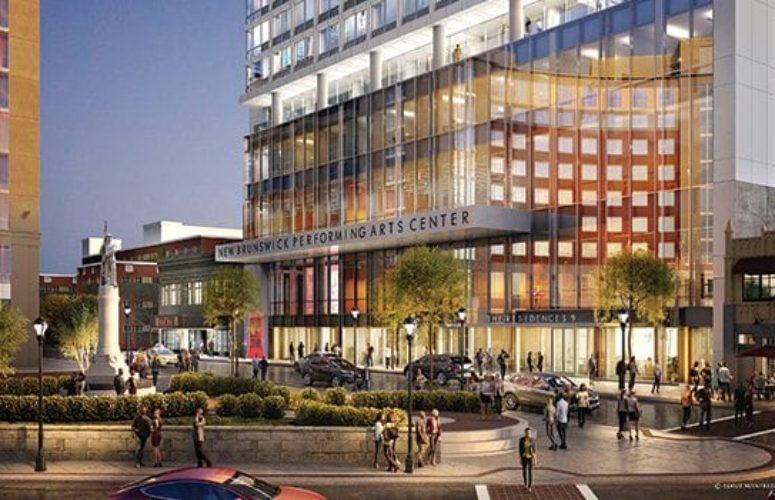
Newark on the Rise
Real estate development projects are transforming more than the skyline of New Jersey’s largest city.
By Vince Baglivo, Contributing Writer On Sep 6, 2018When Newark was announced as a finalist for Amazon’s second headquarters, a reporter asked Aisha Glover, president & CEO of the Newark Community Economic Development Corporation (NCEDC), if she was surprised. Her response, in turn, may have been surprising for anyone who hasn’t kept up with Newark’s rising tides.
“I said that Newark deserves to be on the list and I expected the city to be included,” Glover noted.
Even if Newark, considered by many to be an underdog despite billions of dollars in city and state incentives, is not selected by Amazon, Glover believes Newark is now better prepared to attract other tech firms, Fortune 100 companies and growing businesses of all kinds. Plus, developers are eager to capitalize on increasing demand for affordable, attractive rental apartments for workers at Newark-based companies like Audible and Panasonic (and hopefully Amazon), and others seeking a transit-connected, urban live-work-play environment who have been priced out of Manhattan, Brooklyn, Hoboken and Jersey City.
Development in Newark’s downtown is creating new residential communities among the city’s office towers. Yet, Newark, which once boasted a population of more than 400,000, but today counts just over 281,000, has room for more people and space for additional development throughout the city. That development is needed to accommodate demand from newcomers and existing residents alike.
A study by The Marketing Directors, a consulting firm that advises residential real estate developers, underscores the reasons behind that interest and enthusiasm. In Newark, while prices vary by neighborhood, the study found that studio rentals range from $606 to $2,145 per month, one bedrooms from $770 to $2,450 and two bedrooms from $900 to $3,600.
Active luxury developments currently average $1,740 for a studio, $2,051 for a one bedroom and $2,465 for two bedrooms. According to the study, on average, 82 percent of inventory listed was absorbed monthly in 2018, while luxury rental development prices are approximately 33 percent less expensive on average than comparable Jersey City rentals.
“We’ve made branding and marketing Newark a top priority because it is directly tied to business attraction and investment,” Glover adds. “We can do all kinds of outreach, but if we aren’t thinking strategically about the city’s assets, then we are missing the mark.”
Dudley Ryan, senior vice president for CBRE, a leader in real estate services, believes Newark has finally broken through the “perception barrier” when it comes to awareness of what’s happening in the city among people beyond its borders. He points to an analysis of the 20 finalist cities on Amazon’s search list that found Newark was the second safest, a huge victory for those seeking to counter negative and outdated narratives about the city.
A series of significant events, Ryan adds, has culminated in the growing recognition of Newark’s current “it” status. “The opening of the New Jersey Performing Arts Center (NJPAC) 20 years ago, the Prudential Center 10 years ago and the Red Bull Arena (in nearby Harrison) in 2010 helped reinforce that Newark had the amenities,” Ryan points out.
“The opening of Panasonic’s new North American headquarters building, Prudential’s expansion downtown, the addition of Audible to the business community and the announcement of new leases in Newark signed by Mars and Broadridge Financial Solutions further opened people’s eyes. On the residential side, it was tough to secure financing for Teacher’s Village seven years ago because there were no comparatives before Goldman Sachs stepped in with the help of urban tax credits, but the investment side has obviously changed. Eventually, people realize that there’s a marketplace here,” Ryan says.
An unprecedented gala organized by NCEDC in December of 2017 was deliberately over the top, Glover insists, to showcase local talent, venues, culinary excellence, creativity and more. A Night of Newark was produced entirely by Newark entrepreneurs, vendors and businesses. From the decor and entertainment, to equipment rentals and auction items, the local sourcing underscored NCEDC’s commitment to Mayor Ras J. Baraka’s “Hire. Buy. Live. Newark” initiative.
“NCEDC has a broad range of responsibilities to spur economic development in Newark,” Chip Hallock, president & CEO, Newark Regional Business Partnership (NRBP), says, “and Aisha’s experience and talents add greatly to the city’s ability to foster growth and opportunity for business and residents alike.”
Glover’s confidence in Newark’s preparedness for HQ2 and increased interest in the city as a place to live, work and invest is shared by other leaders in New Jersey’s largest city. She credits Mayor Baraka, reelected in June to a second term with more than 77 percent of votes cast, for his leadership in pushing a collaborative approach to revitalization.
Connecting Newark’s business, development, investment, educational and arts sectors and working cooperatively with municipal, county and state entities is part of an intentional strategy to benefit all of Newark’s stakeholders.
“While there are tremendous opportunities for development and growth, it is our job to make sure that new projects are right for Newark, whether they are located downtown or in other parts of the city,” Glover says.
That includes NCEDC supported projects like the Nina Simone House on Clinton Avenue in Newark’s South Ward. Located at the site of the former Clinton Trust Company, the project is turning the long-abandoned building into 27 units of affordable housing for local artists, plus a café, workspace, art gallery and performing arts space.
There is also the Carrino Plaza Apartments on Broadway in Newark’s North Ward. In July, Mayor Baraka joined New Jersey Housing and Mortgage Finance Agency (NJHMFA) Executive Director Charles A. Richman and Regan Development Corporation representatives to break ground on the former Boys & Girls Club site. When completed, the four-story building will provide 60 units of affordable housing in one-, two- and three-bedroom apartments as well as 6,000 square feet of retail space, a community room, laundry facilities, and an on-site manager’s office.
In the East Ward, J&L Properties is transforming a former garment factory into the Textile Lofts, a five-story mixed use development featuring 64 rental apartments with high-end amenities and ground floor retail and commercial space with 14-foot ceilings, massive windows and exposed brick. A second, recently approved development from J&L on McWhorter Street, will take advantage of Newark’s newly implemented MX-3 zoning in the area around Newark Penn Station, allowing for taller buildings. It will include more than 400 residential units, first-floor retail space and parking in its planned 12 stories.
Many believe Newark’s location as a regional and global transportation hub is the key factor in Amazon’s (and others’) focus on the city. Boasting one of the busiest sea and airports on the East Coast and unsurpassed highway and rail connectivity, Newark occupies an enviable position in the bustling Northeast corridor.
Yet, Newark’s much vaunted high-speed Internet capabilities may be the real game-changer behind the surge of interest among technology firms as well as companies and organizations across the business spectrum. In a July GlobeSt.com feature, editor Steve Lubetkin called Newark the “Hub of the Internet” and stated that Newark’s data infrastructure is now “the envy of many locations around the country, featuring 10 gigabit-per-second speed, one of the fastest urban data networks.”
CBRE’s Dudley Ryan gives credit to the foresight of city leaders for building in capacity for the expansion of Newark’s data networks and making it easy and cost effective to make a connection. “Every year, more and more data is being moved,” Ryan says. “In many instances, potential tenants respond to the high-speed Internet available in Newark, saying their equipment can’t handle it. But if you are going to sign a lease for 5-10 years, your equipment will catch up, so why not get ahead of the curve?”
In 2016, Mayor Baraka launched Newark Fiber, a high-speed, low-cost Internet initiative offering commercial accessibility for Newark buildings and their tenants. The announcement was made at 2 Gateway Center, part of the signature Gateway Complex in Newark’s downtown. Lotus Equity Group agreed to have Gateway Center become the first connected to Newark Fiber, a key part of the new owners’ renovation strategy to make the buildings more attractive to modern tenants seeking super-fast Internet service.
Lotus is also moving forward with Riverfront Square, a mixed-use development on the nearly 12-acre site of the former Newark Bears Stadium. A short stroll from Washington Park, Audible’s headquarters, the Rutgers Newark Business School and Newark’s Broad Street Station, Riverfront Square will include 2,000 residential units, large and small-scale retail, cultural and public open space, a hotel, 2 million square feet of office space and parking spaces in the heart of downtown.
“Newark is one of America’s great cities, synonymous with innovation, music and culture. At Lotus Equity, we’re thrilled to do our part in revitalizing Newark through Riverfront Square, a transformational mixed-use development that will benefit the local community through jobs, workforce housing and beautifully designed open space for public use,” Ben Korman, founder and CEO, Lotus Equity Group, says. “Through 2 Gateway, the city’s largest commercial office building, we’ve been vocal promoters of Newark and are thrilled to see so much interest from global and local companies who want to do business here.”
Other projects in the area around Broad Street Station and Washington Park are creating new neighborhoods downtown, and emphasizing the importance of connectivity between different neighborhoods, districts and open space like Weequahic Park and the rapidly expanding Riverfront Park. Internationally renowned architectural firm James Corner Field Operations, lauded for its work on the High Line in Manhattan, is serving as the lead designer and landscape architect for Phase II of the Riverfront Park project that will help connect the Passaic River waterfront in the downtown area, the Ironbound District and beyond.
A development team comprised of L+M Development Partners, Prudential Financial Inc. and the Goldman Sachs Urban Investment Group is working with Rutherford-based Inglese Architecture & Engineering (IAE) to redesign and reposition a landmark 21-story, 436,000-square-foot tower located at 540 Broad Street. Near Washington Park, the Art Deco building was designed and built in 1929 for the New Jersey Bell Telephone Company by famed architect Ralph Thomas Walker. Known for its majestic lobby and brick-and-sandstone exterior, 540 Broad Street was added to the U.S. National Register of Historic Places in 2005.
The conversion anticipates a new mixed-income, mixed-use development featuring approximately 265 residences – 20 percent of which will be affordable – and more than 80,000 square feet of Class A office and retail space. Affordable units will be targeted for families earning between 40-50 percent of Area Median Income. Residences in the new project will be located on floors 6 through 21, with the lower floors consisting of office, retail and other non-residential uses. The building has been home to the regional offices of Verizon, which will continue to occupy the building’s fourth floor.
The project is L+M, Prudential and Goldman Sachs UIG’s latest investment in Newark’s downtown in partnership with Citi Community Capital. In 2017, the partnership re-opened the historic Hahne & Co. building at 609 Broad Street. The former iconic department store, which sat abandoned for nearly 30 years, was transformed into a mixed-use complex featuring residences, an arts and cultural center operated by Rutgers University-Newark, Newark’s first Whole Foods Market and a Marcus Samuelsson restaurant, Marcus B&P.
“The national attention now focused on Newark’s resurgence is a testament to the tremendous efforts of the city and anchor institutions to foster growth and plan intelligently,” Sam Chapin, associate director at L+M Development Partners, says. “It stems from the willingness of the city’s leaders to be creative and have a clear vision for the future. As businesses return downtown and residents are provided new opportunities, Newark will continue to reestablish itself as one of America’s great cities.”
NCEDC’s Glover also credits Newark’s arts and cultural scene for its ability to link businesses, developers and the city’s diverse cultural community. The Grammy Museum in Los Angeles choosing Newark’s Prudential Center as its East Coast home was a major statement about the city. The facility itself is among the top ranked sports and entertainment venues nationally, welcoming 1.75 million guests annually as the home of the NHL’s New Jersey Devils, Seton Hall University basketball and a wide range of performers; from U2 and Fleetwood Mac to Bruno Mars and Elton John. “The Rock” is part of an entertainment triangle including Red Bull Arena and the New Jersey Performing Arts Center (NJPAC) that has spurred additional development and investment in the area.
One Theater Square, a joint project between Dranoff Properties and NJPAC, underscores this connection. The project, located on a 1.2-acre site across from the performing arts center and Military Park in the heart of downtown Newark, features 245 upscale apartments, most with balconies and skyline views in studio, one-, two-, and three-bedroom models. Every unit has a modern chef’s kitchen with stainless steel appliances and granite countertops, high ceilings, large windows and high-end finishes.
Luxury amenities in the much-anticipated 22-story glass and brick skyscraper include an elegant lobby attended by a 24-hour concierge, spacious club room with demonstration kitchen, billiards room, state-of-the-art fitness center and yoga room, outdoor entertainment terrace with soft seating, TV’s and fire pit, plus an attached, multi-story, 285-spot residents’ garage.
“One Theater Square draws upon our extensive experience developing large-scale residential properties in arts and cultural districts that help transform neighborhoods into vibrant communities,” Carl E. Dranoff, founder and CEO of Dranoff Properties, says. “This is a bulls-eye location in a rising city. With NJPAC literally at its doorstep, One Theater Square will redefine what’s meant by ‘home entertainment.’”
Mulberry Commons, a long-debated project located between the Prudential Center, Edison Place and Rt. 21, is another example of connectivity contributing to an increasingly dynamic downtown. Plans include a pedestrian bridge across busy Rt. 21, linking Newark’s bustling downtown and Ironbound districts.
Construction began in 2017 on the 3-acre park, being developed for an estimated $10 million by a public-private partnership that includes the City of Newark, the NCEDC, the New Jersey Devils, the Prudential Center and developers J&L Companies and Edison Properties. It will feature landscaped public gathering spaces and represents the centerpiece of a transformative redevelopment of the area. Proponents envision the development of additional dining, retail and residential options along the park’s periphery, and related job creation that will help revitalize the entire corridor.
Edison Properties has led the way in that area with its Ironside Newark Project, converting a historic freight warehouse adjacent to the Mulberry Commons development into a leading-edge office and retail location.
In May, Edison Properties and Mars Wrigley Confectionery U.S. announced that the company behind the Mars and Wrigley brands would lease space at Ironside Newark. The move is expected to be completed in 2020 and represents a homecoming for Mars. The company was founded in Newark more than 80 years ago, and Newark was the site of Mars’ first M&M’s factory.
Edison Properties is moving its headquarters after 62 years on Washington Street to Ironside Newark in 2019 and will occupy the third floor. Executive Vice President Michael Sommer says 300 windows were recently cut through the fortress-like walls of the building, originally built in 1907 and capable of hosting trains from the Central Railroad of New Jersey that entered through the structure’s second floor to connect with the city’s elevated track network.
“The biggest compliment we received recently was from someone who noted how precisely the physical transformation of the building resembles our original renderings,” Sommer states. “We are already seeing so much activity around Ironside Newark and the Mulberry Commons site,” he adds “and look forward to seeing the connections between the downtown and Ironbound districts established that were so much a part of Edison Properties Founder, the late Jerry Gottesman’s vision.”
“Under the leadership of Mayor Baraka and his administration, the City of Newark has been a great partner,” Edison Properties Chief Operation Officer Ben Feigenbaum, concludes. “His support for new and progressive ideas for Newark has to be acknowledged as the city continues to move forward.”
Related Articles:






